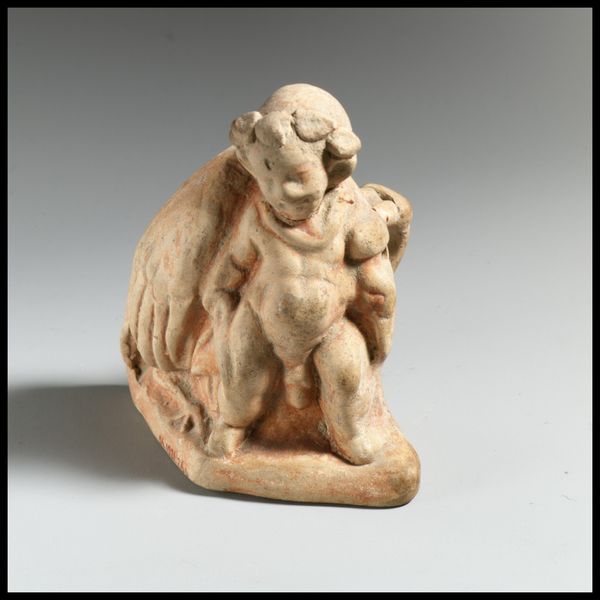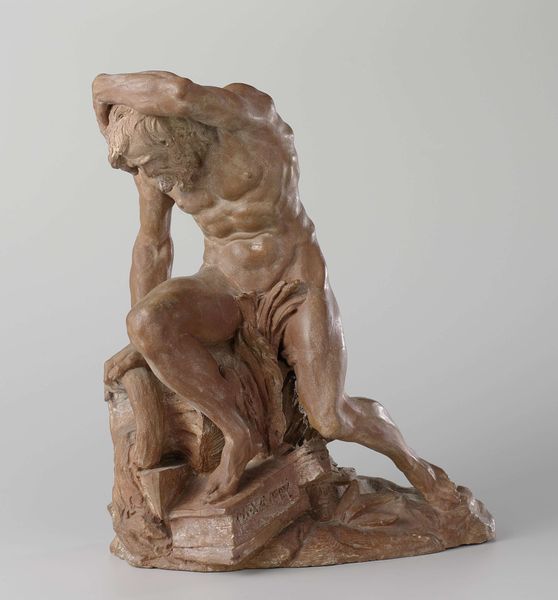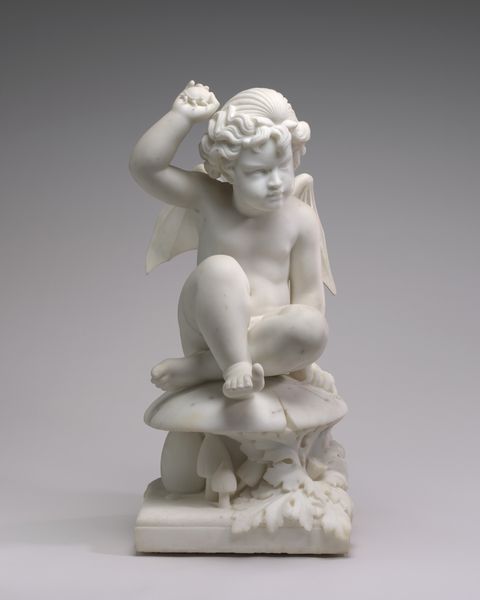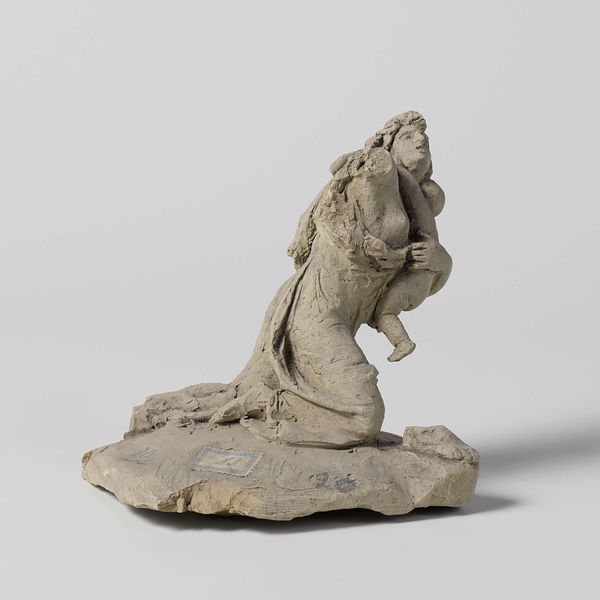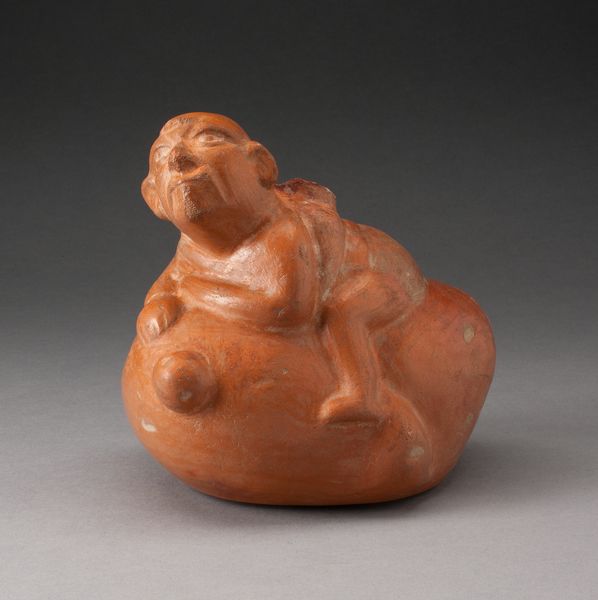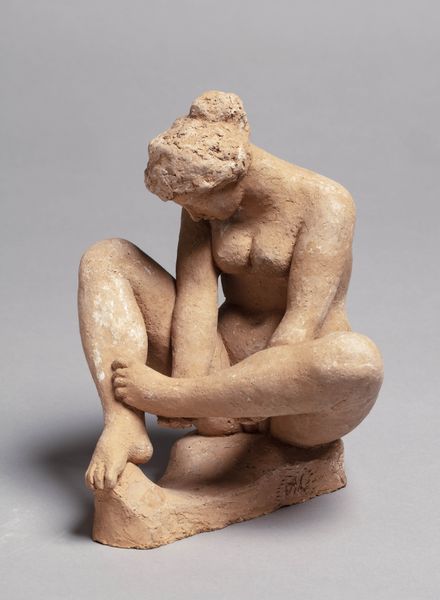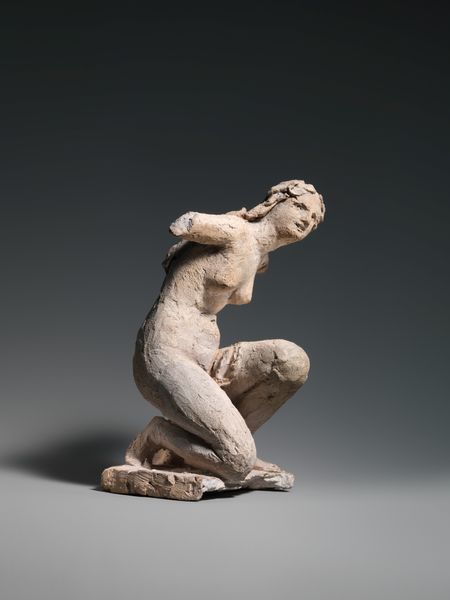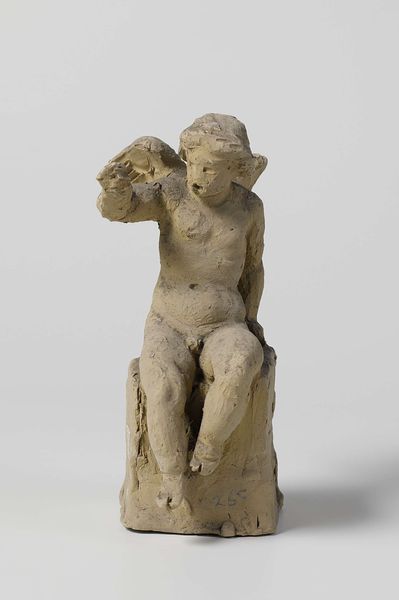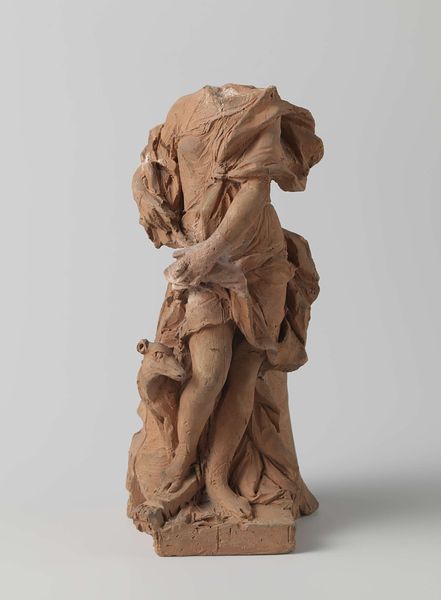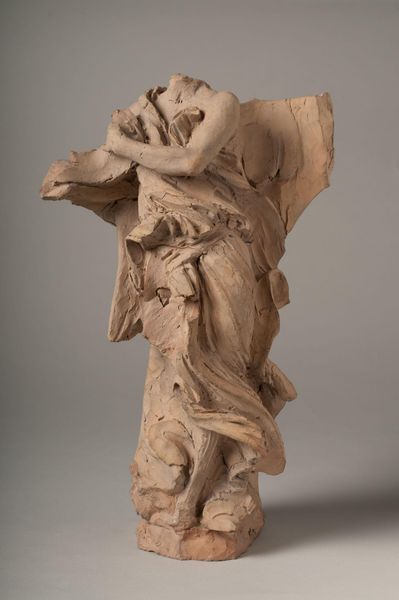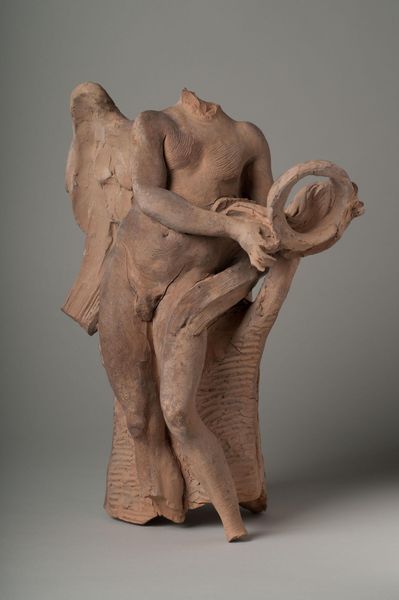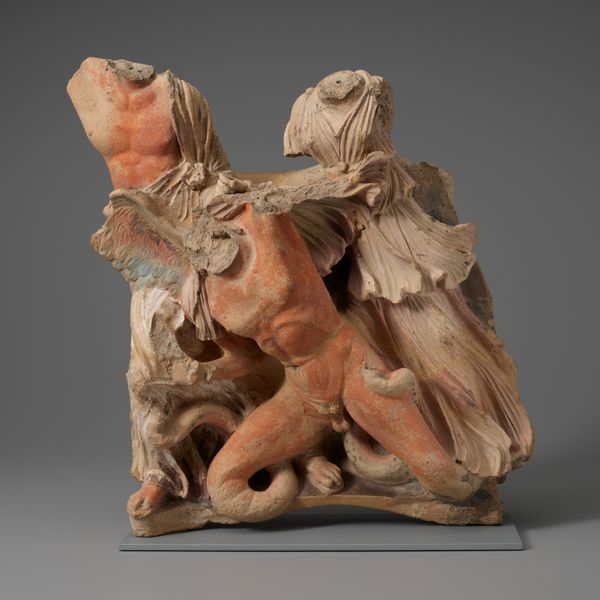
Dimensions: Overall (confirmed): 16 × 10 × 10 3/8 in. (40.6 × 25.4 × 26.4 cm)
Copyright: Public Domain
Editor: This bronze sculpture, "Fallen Caryatid Carrying an Urn," was created by Auguste Rodin in 1883. It evokes such a powerful feeling of defeat. What social commentary might Rodin be making with this piece? Curator: That’s a keen observation. Rodin was deeply engaged with the social and political turmoil of late 19th-century France. The figure, burdened and collapsed, immediately speaks to themes of labor and societal expectation. It echoes classical forms but utterly subverts their triumphalism, wouldn't you agree? Editor: Absolutely. It is the antithesis of triumphal! Is it a statement about the burden placed specifically on women during that period, maybe? Curator: Quite possibly. Consider the Caryatid herself – traditionally an architectural support, representing female figures forced into servitude. Rodin's choice to depict her fallen suggests a breakdown, not just of the individual, but of the societal structures she upholds. Museums at the time often celebrated patriotic heroics; what do you think it meant for Rodin to offer this instead? Editor: It feels like a radical act, pushing back against idealized representations and revealing the costs of societal expectations. Did it garner controversy at the time? Curator: It did. Rodin challenged the establishment's vision of beauty and power. Pieces like this contributed to shifting cultural perceptions, prompting conversations about whose stories were being told and how. Editor: This conversation has opened my eyes to viewing artwork beyond face value, understanding the narratives within it! Curator: Indeed. Rodin's sculpture demonstrates art's power to reflect, critique, and ultimately shape cultural values.
Comments
No comments
Be the first to comment and join the conversation on the ultimate creative platform.
